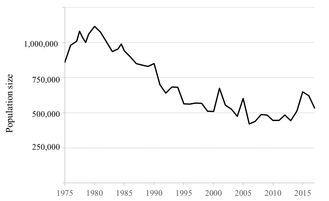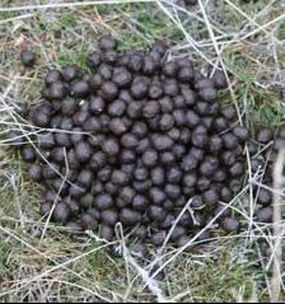Usually, capture recapture involves physically marking animals with a visible tag. However, with genetic advances over the last 20 years, it is now feasible and affordable to mark animals by obtaining tissues, hairs, or fecal samples. This noninvasive marking process requires that DNA be extracted from the sample, and then the DNA is genotyped and given an individual identity. Once a unique genotype is obtained, this counts as a mark. When future samples are collected and genotyped it is possible that a genotype from one sample will match a genotype from a previous sample and this counts as a recapture of the same individual.
For deer, one of the most readily available and easily collected sources of DNA is scat. Ms. Curtis spent six weeks this summer in San Felipe Valley collecting deer scat to use to estimate deer population size in the area. Along with field work partners Richard Cousins, a CDFW employee that has served over 40 years with the agency, and Tessa Cardinal, a generous volunteer fresh out of Point Loma Nazarene University with a biology degree and passion for large mammals, Ms. Curtis established 24 transects spaced relatively uniformly across the valley that followed deer trails. In the unforgiving summer heat and rough terrain, these workers walked many kilometers collecting scat and recording information on where each sample was collected. Ms. Curtis then took these samples back to the lab to extract DNA and identify individuals. Over the course of the summer, the team collected over 500 scat samples that will have to be processed and genotyped. This work is ongoing, but genotyping is expected to be completed by spring of next year. Once each sample is given an identity, Ms. Curtis can determine if there are recaptures and use this information for her analysis. This will ultimately produce the estimates and tools CDFW needs to continue monitoring deer populations in Southern California and ensuring the continued success of these populations.









 RSS Feed
RSS Feed
